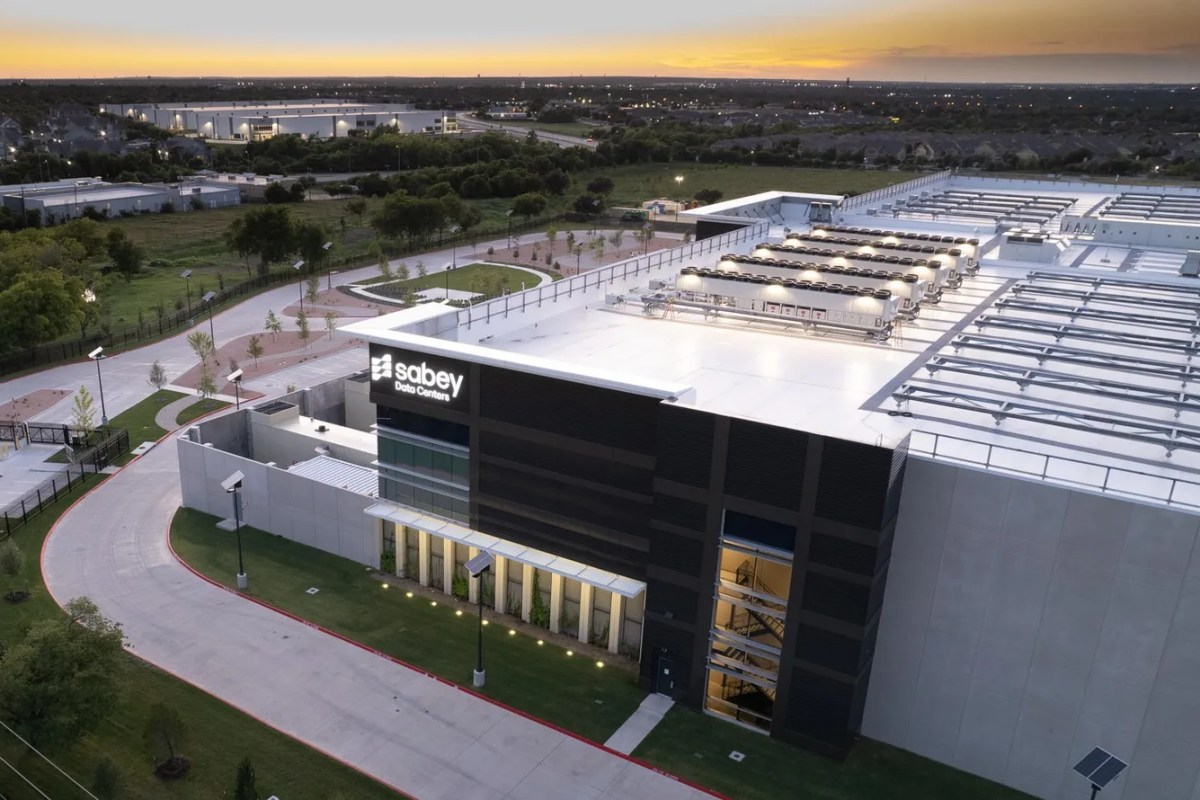Data Centre Build News & Insights
Data Centre Build News & Insights
Data Centre Projects: Infrastructure Builds, Innovations & Updates
Data Centres
News
BSDI announces 5,000-acre campus in Montana
Big Sky Digital Infrastructure (BSDI), a Quantica Infrastructure (Quantica) company, has just announced a major project: a 5,000-acre energy and digital infrastructure campus outside Billings, Montana, USA.
The initial projected capacity is 500 MW of renewable power and battery energy storage, expandable to 1 GW. The company plans construction of the Big Sky Campus beginning in 2026.
“Montana has always been a state that builds its future on the strength of its people and natural resources,” says Damon Obie, a Montana native and co-founder of Big Sky Digital Infrastructure.
“The Big Sky Campus represents a unique opportunity to build on the industries that powered our history with the digital economy that will define our future.
"This project is about creating opportunities for Montanans, so our communities can thrive in the digital age while staying true to our values and heritage.”
John Chesser, co-founder of Big Sky Digital Infrastructure, adds, “A well-planned digital economy can support communities through employment opportunities and infrastructure investments.
“This project uses the rising demand for hyperscale, AI, and cloud computing to deliver land, renewable energy, and high-speed fibre in one integrated solution.”
“Having worked in the Montana power industry for over twenty years,” comments Charlie Baker, BSDI’s Chief Financial Officer, “I look forward to bringing BSDI’s approach of combining traditional grid power with planned renewable and battery energy storage to help customers meet sustainability and reliability goals.
"Improvements to in-state telecommunications that come with this will benefit the whole community including schools, healthcare, and community services.”
The site is expected to be connected to hundreds of miles of new fibre-ready underground conduit, enabling diverse routes to major metropolitan areas and aiming to ensure fast, resilient connectivity.
The site will also include large-scale renewable energy and battery energy storage to support the campus.
Through this project, the BSDI team expects to create construction jobs and permanent positions, boosting local economic development and workforce training.
Joe Peck - 4 August 2025
Data Centre Build News & Insights
Renewables and Energy: Infrastructure Builds Driving Sustainable Power
Sustainable Infrastructure: Building Resilient, Low-Carbon Projects
Siemens earns Platinum in EcoVadis Sustainability Rating
German multinational technology company Siemens has been awarded the Platinum medal in the 2025 EcoVadis Sustainability Rating.
This achievement places Siemens among the top 1% of around 130,000 companies assessed worldwide by EcoVadis, a provider of business sustainability ratings.
The Platinum medal, according to the company, "underscores Siemens' commitment to sustainability and reflects achievements across all of EcoVadis’ assessment areas: Environment, Ethics, Labour & Human Rights, and Sustainable Procurement."
EcoVadis assessed Siemens with a score of 85 points. In addition, Siemens Mobility was assessed separately, achieving a score of 84 points.
More than 90% of Siemens’ business enables customers to achieve a positive sustainability impact across three key areas: decarbonisation and energy efficiency, resource efficiency and circularity, and people centricity & society.
“Achieving the highest-ever score and being among the top 1% of all rated companies reinforces our position as a sustainability leader and recognises the dedication of our people,” claims Eva Riesenhuber, Global Head of Sustainability at Siemens.
“Sustainability is at the core of our business, and we are continuing to scale our impact in the areas of industry, infrastructure, and mobility, while empowering our customers to become more competitive, more resilient, and more sustainable.”
Andreas Mehlhorn, Head of Sustainability at Siemens Mobility, adds, “Being awarded the EcoVadis Platinum medal once again is a strong testament to our leading position in the rail industry.
"It reflects our commitment to integrating sustainable solutions for our customers by maintaining rigorous sustainability standards across our operations and supply chain.”
The EcoVadis business sustainability rating is based on international sustainability standards, including the Ten Principles of the UN Global Compact, the International Labour Organization (ILO) conventions, the Global Reporting Initiative (GRI) standards, and ISO 26000.
For more from Siemens, click here.
Joe Peck - 4 August 2025
Data Centre Build News & Insights
News
Quantum Computing: Infrastructure Builds, Deployment & Innovation
Fujitsu developing 10,000+ qubit quantum computer
Japanese multinational ICT company Fujitsu today announced it has started research and development towards a superconducting quantum computer with a capacity exceeding 10,000 qubits.
Construction is slated for completion in fiscal 2030.
The new superconducting quantum computer will operate with 250 logical qubits and will utilise Fujitsu's 'STAR architecture,' an early-stage fault-tolerant quantum computing (early-FTQC) architecture also developed by the company.
Fujitsu aims to make practical quantum computing possible - particularly in areas like materials science, where complex simulations could unlock ground breaking discoveries - and, to this end, will focus on advancing key scaling technologies across various technical domains.
As part of this effort, Fujitsu has been selected as an implementing party for the 'Research and Development Project of the Enhanced Infrastructures for Post-5G Information and Communication Systems,' publicly solicited by the NEDO (New Energy and Industrial Technology Development Organisation).
The company will be contributing to the thematic area of advancing the development of quantum computers towards industrialisation.
The project will be promoted through joint research with Japan’s National Institute of Advanced Industrial Science and Technology (AIST) and RIKEN, and will run until fiscal year 2027.
After this 10,000-qubit machine is built, the company says it will further pursue advanced research initiatives targeting the integration of superconducting and diamond spin-based qubits from fiscal 2030, aiming to realise a 1,000 logical qubit machine in fiscal 2035, while considering the possibility of multiple interconnected quantum bit-chips.
Comments
Vivek Mahajan, Corporate Executive Officer, Corporate Vice President, CTO, in charge of System Platform, Fujitsu, claims, "Fujitsu is already recognised as a world leader in quantum computing across a broad spectrum, from software to hardware.
"This project, led by NEDO, will contribute significantly to Fujitsu’s goal of further developing a 'Made in Japan' fault tolerant superconducting quantum computer.
"We would also be aiming to combine superconducting quantum computing with diamond spin technology as part of our roadmap.
"By realising 250 logical qubits in fiscal 2030 and 1,000 logical qubits in fiscal 2035, Fujitsu is committed to leading the path forward globally in the field of quantum computing.
"Additionally, Fujitsu will be developing the next generation of its HPC platform, using its FUJITSU-MONAKA processor line, which will also power FugakuNEXT. Fujitsu will further integrate its platforms for high-performance and quantum computing to offer a comprehensive computing platform to our customers."
Focus areas for technological development
Fujitsu says its research efforts will focus on developing the following scaling technologies:
• High-throughput, high-precision qubit manufacturing technology — Improvement of the manufacturing precision of Josephson Junctions, critical components of superconducting qubits which minimise frequency variations.
• Chip-to-chip interconnect technology — Development of wiring and packaging technologies to enable the interconnection of multiple qubit chips, facilitating the creation of larger quantum processors.
• High-density packaging and low-cost qubit control — Addressing the challenges associated with cryogenic cooling and control systems, including the development of techniques to reduce component count and heat dissipation.
• Decoding technology for quantum error correction — Development of algorithms and system designs for decoding measurement data and correcting errors in quantum computations.
Background
The world faces increasingly complex challenges that demand computational power beyond the reach of traditional computers. Quantum computers offer the promise of tackling these previously intractable problems, driving advancements across numerous fields.
While a fully fault-tolerant quantum computer with 1 million qubits of processing power is considered the ultimate goal, Fujitsu states it is focused on delivering practical solutions in the near term.
In August 2024, in collaboration with the University of Osaka, Fujitsu unveiled its 'STAR architecture,' an efficient quantum computing architecture based on phase rotation gates.
This architecture could pave the way for early-FTQC systems capable of outperforming conventional computers with only 60,000 qubits.
On the hardware front, the RIKEN RQC-Fujitsu Collaboration Center, established in 2021 with RIKEN, has already yielded a 64-qubit superconducting quantum computer in October 2023, followed by a 256-qubit system in April 2025.
Scaling to even larger systems requires overcoming challenges such as maintaining high fidelity across multiple interconnected qubit chips and achieving greater integration of components and wiring within dilution refrigerators.
In addition to its superconducting approach, Fujitsu is reportedly also exploring the potential of diamond spin-based qubits, which use light for qubit connectivity.
The company is conducting research in this area in collaboration with Delft University of Technology and QuTech, a quantum technology research institute, which has resulted in the successful creation of accurate and controllable qubits.
For more from Fujitsu, click here.
Joe Peck - 1 August 2025
Data Centre Build News & Insights
Data Centre Projects: Infrastructure Builds, Innovations & Updates
Data Centres
News
Sabey announces Austin Building B
Sabey Data Centers, a data centre developer, owner, and operator, has announced that construction is under way for Building B on its growing Austin campus, located in the burgeoning tech corridor of Round Rock, Texas.
This three-storey facility is designed to deliver a total of 54 megawatts of power capacity, with the first 18 megawatts expected to be ready for service in Q3 2027.
Sabey says Austin B continues its commitment to building "scalable, energy-efficient digital infrastructure tailored for enterprise and hyperscale needs."
The facility is liquid-cooling-ready by design, building on Austin Building A, where 86% of current deployments are liquid-cooled.
This next phase of development hopes to ensure that Sabey is well-positioned to support the rising demand for high-density compute environments such as AI, HPC, and advanced research workloads.
“As we continue to expand our national footprint, launching construction on Austin B represents an important milestone in serving one of the country’s fastest-growing technology markets,” comments Tim Mirick, President of Sabey Data Centers.
“The Round Rock facility is purpose-built for flexibility and efficiency, and it offers an ideal home for forward-thinking customers with evolving density needs.”
Preleasing is now open, with the building being engineered to accommodate a range of cooling strategies and power densities, including hybrid and liquid-cooled deployments exceeding 200 kilowatts per rack.
Sabey Data Centers is a joint venture between Sabey Corporation and National Real Estate Advisors, acting as the investment manager on behalf of its institutional clients.
For more from Sabey, click here.
Joe Peck - 31 July 2025
Data Centre Build News & Insights
News
Renewables and Energy: Infrastructure Builds Driving Sustainable Power
Nxtra signs partnership with AMPIN
Indian data centre operator Nxtra (by Airtel) has signed a new agreement with AMPIN Energy Transition for an additional 125.65 MW of solar-wind hybrid energy via Inter-State Transmission System (ISTS) connected projects.
This brings the total renewable energy capacity supplied to Nxtra by AMPIN to more than 200 MW.
The added capacity will be delivered in two phases, through captive projects located in Rajasthan and Karnataka. These will complement AMPIN’s existing supply of solar energy to Nxtra through intra-state, open access arrangements in Uttar Pradesh, Maharashtra, and Odisha.
Under the new agreement, AMPIN will expand its service to 11 additional states and introduce new technologies, including large-scale ISTS-based renewable energy and consolidated supply from a single Independent Power Producer (IPP).
Ashish Arora, CEO of Nxtra, says, “Sustainability is not just a commitment, it is our responsibility and our opportunity to lead.
"By powering our digital infrastructure with over 200 MW of renewable energy through our partnership with AMPIN, we are setting new standards for the industry.
"This achievement highlights our leadership in using ISTS-backed clean energy to power our facilities sustainably, boosting reliability, and ensuring tangible climate impact.
"At Nxtra, we are determined to drive innovation and inspire action, ensuring that our operations not only support India’s digital growth but also protect its environment for generations to come.”
Pinaki Bhattacharyya, founder, Managing Director, and CEO of AMPIN, adds, “With this partnership, we demonstrate that through a seamless blend of inter-state and intra-state renewable energy solutions backed by a pan-India presence, we can take any customer through a nearly 100% energy transition.
"Nxtra by Airtel, a leader in the data and fast-growing data centre space, shares our vision for sustainability and we are proud to make data centres green by this association.”
AMPIN’s approach aims to establish long-term relationships with customers by offering energy supply across various technologies and regions. It says the collaboration with Nxtra highlights the role of large-scale renewable energy agreements in increasing operational efficiency and reducing carbon emissions.
Nxtra, likewise, says it has committed to reaching net zero emissions and is aligning its efforts with Science Based Targets initiative (SBTi) guidance. As part of this effort, the company is implementing a range of measures to reduce its direct (scope 1) and indirect (scope 2) greenhouse gas emissions.
In June 2024, Nxtra joined the global RE100 initiative, pledging to source 100% of its electricity from renewable sources. It became the first data centre operator in India, and the 14th Indian company overall, to join the programme.
For more from Nxtra, click here.
Joe Peck - 31 July 2025
Data Centre Build News & Insights
Data Centre Infrastructure News & Trends
Enterprise Network Infrastructure: Design, Performance & Security
News
Quantum Computing: Infrastructure Builds, Deployment & Innovation
Sitehop, Red Helix testing quantum-ready encryption
Sitehop, a UK startup focused on quantum encryption, has announced its partnership with Red Helix, a network and security testing company, to bring advanced testing in-house and to "supercharge" the critical speed-testing of its encrypted data transmission, utilising a Teledyne LeCroy Xena system.
With support from a five-figure 'productivity grant' from South Yorkshire Mayoral Authority, Sitehop has invested in a Teledyne LeCroy Xena Loki 100G traffic-generation and testing platform, which enables bi-directional testing of sub-microsecond latency in 100Gbps networks.
Bringing testing in-house has also reportedly eliminated delays and risks in export and customs, which included a minimum two-week turnaround at more than £18,000 per testing cycle.
Previously, Sitehop relied on an outsourced facility in France, but the new UK-based set up enables them to complete testing in a single day, freeing the time of Sitehop’s engineering teams and boosting their productivity.
Sitehop uses the Xena Loki device to test and validate its Sitehop SAFEcore platform, capable of 835 nanoseconds latency at 100Gbps encryption.
The platform can support 4,000 concurrent connections, deploying "crypto-agile" encryption for use in sectors such as telecoms, financial services, government, and critical national infrastructure.
Testing with the Xena Loki device covers peak load conditions, burst traffic, error injection and fault recovery, and end-to-end encrypted traffic flows. Multi-stream stress tests, mixed protocol environments, and real-time encrypted traffic benchmarking are part of the processes.
According to the company, the "speed and accuracy" of the Xena Loki platform enables Sitehop to validate latency, throughput, packet-loss, and error-handling across different profiles.
This is important to prove the Sitehop SAFEcore platform has the necessary performance and resilience in high-bandwidth, low-latency environments and is ready for new use cases such as 5G backhaul, wearable security technology, and the evolution of post-quantum cryptography.
“Testing in this way is a strategic enabler for us, accelerating product release cycles and reducing the risk of field failure while providing clients with higher levels of confidence during procurement,” says Melissa Chambers, co-founder and CEO of Sitehop.
“This is a major selling-point for enterprise and critical infrastructure environments.”
“We are incredibly proud to be at the forefront of the next generation of British tech manufacturing and believe we are part of a resurgence of innovation in the UK. We are proving that deep tech, hardware innovation, and cyber resilience can thrive here.
"As we expand globally and target high-assurance sectors, our ability to validate performance independently and rapidly becomes a cornerstone of our growth model. The grant we received has been hugely important, enabling us to bring a critical capability in-house that has accelerated our growth momentum.”
Baseline validation using the Xena Loki device is in line with the benchmarks RFC 2544 and Y.1564. In practice, however, the Sitehop SAFEcore system - the company claims - "frequently outperforms the scope of traditional methodologies, requiring custom profiles including simulated threat-scenarios, multi-session encrypted traffic under dynamic key exchange, and adaptive stream-shaping."
Liam Jackson, Director of Technology Solutions at Red Helix, comments, “We are thrilled to work with Sitehop, an exciting start-up company demonstrating that hardware-based security innovation is alive and well in the UK.
"Testing quantum-ready security platforms requires precise accuracy, reliability, and sustained high-speed throughput, which software-only traffic-generation tools can struggle to deliver.
"Sitehop understands this, and by harnessing the hardware-based Teledyne LeCroy Xena Loki platform, it hugely accelerates essential testing, gaining the speed, precision, and confidence to bring its cutting-edge solutions to market faster without impacting quality.”
Joe Peck - 30 July 2025
Data Centre Build News & Insights
Sustainable Infrastructure: Building Resilient, Low-Carbon Projects
'AI boom triggers 160% data centre power surge'
Artificial intelligence (AI) is rapidly transforming industries from healthcare to finance, but it comes with a massive energy footprint. Data centres, the backbone of AI, consume huge amounts of power, pushing companies like Meta, Google, and Microsoft to find sustainable solutions.
The complexity and scale of AI models, particularly training large neural networks, require extraordinary computational power, resulting in substantial carbon emissions. For example, maintaining optimal cooling in data centres alone adds significant energy overhead.
This demand is further driven by AI technologies like autonomous vehicles and predictive analytics, which require continuous data processing.
The increased energy use means more burning of coal, oil, and natural gas, which leads to higher emissions. With renewable energy not scaling fast enough, fossil fuels are still the main power source for many data centres. This reliance is especially concerning given projections that power demand in data centres will increase by 160% by 2030, with AI’s energy needs growing rapidly.
Recent headlines show the scale of the challenge: Meta’s landmark 20-year deal to source nuclear power for its Illinois data centres underlines just how critical nuclear energy has become in meeting AI’s soaring electricity demand.
Meanwhile, Google’s agreements to power its data centres with small nuclear reactors and Microsoft’s plans to restart the Three Mile Island plant further highlight how these tech giants are betting big on nuclear to keep AI running without ramping up carbon emissions.
AI boom threatens net zero goals
Data centres, the backbone of AI-powered systems, are among the most energy-intensive facilities in the world. According to the EU Energy Efficiency Directive (EED), operators must now demonstrate continual energy improvements.
This directive aligns with broader regulations like the European Climate Law, which enforces the EU’s target of climate neutrality by 2050. In the UK, schemes like ESOS Phase 3 place additional energy reporting and efficiency requirements on operators.
In Europe, three of the largest economies - the UK, Germany, and France - are at the forefront of efforts to decarbonise their economies and transition to net zero. However, the data centres operating within these countries are facing significant challenges in meeting their decarbonisation and sustainability targets.
Recent findings from a CFP Energy survey highlight that while the majority of data centres in these countries have a net-zero strategy in place, achieving their targets remains elusive.
Net zero strategy adoption
• UK: 94% have a net zero strategy, but 22% are not meeting their decarbonisation and sustainability targets.• Germany: 90% have a net zero strategy, but 30% are falling short of their targets.• France: 86% have a net zero strategy, with 14% not hitting their targets.
These statistics underscore a critical reality: despite ambitious targets and high adoption rates of net zero strategies, achieving actual decarbonisation is proving to be a major hurdle.
This trend is particularly concerning as AI demand is poised to increase significantly. If the cost equation remains imbalanced, we may soon face a situation where net zero targets are discarded in favour of meeting the demands of AI, as is already happening in various parts of the world.
The growing reliance on carbon offsetting
With the rapid increase in energy demand from AI, many large tech companies, including Microsoft, are turning to carbon credits and voluntary carbon projects as a means to mitigate their environmental impact.
This has become crucial for companies that simply cannot reduce their energy consumption with current technologies. For instance, Microsoft recently entered into an agreement with Re-Green, committing to offset its emissions through carbon credit purchases and climate-positive projects.
While these measures help compensate for carbon emissions, they highlight a gap in current energy solutions: the technology and power infrastructure are not yet capable of fully supporting the sustainable growth of AI.
Mitigating the environmental footprint of AI and data centres
CFP Energy, a UK-based provider of energy trading, risk management, and environmental services, says it advocates for:
• Sustainable construction — Reducing environmental impact from the outset by using low-embodied-carbon materials in data centre design, which helps cut emissions during both construction and operation.
• Advanced cooling systems — Improving energy efficiency through approaches like liquid cooling, which reduce electricity usage while maintaining optimal performance in increasingly power-intensive environments.
• Voluntary carbon offsetting — Compensating for unavoidable emissions with verified carbon credits. However, recent disputes - such as the suspension of a Kenyan soil-carbon project involving Netflix and Meta - reveal serious concerns about transparency, community impact, and oversight. These events highlight the need for stronger governance and ethical standards across the voluntary carbon market.
• Collaboration — Developing joint solutions with governments, utilities, and technology partners - including renewable energy agreements and efficient hardware - to drive systemic progress and ensure sustainable AI infrastructure at scale.
A legislative push towards sustainability
The policy environment is rapidly evolving, with regulations like the Digital Operations Resilience Act and the Corporate Sustainability Reporting Directive mandating transparency on emissions and energy efficiency.
Operators who fail to adapt risk falling behind, both in compliance and customer retention. Businesses increasingly prioritise sustainability, and carbon-conscious customers are gravitating towards providers with robust strategies for renewable energy adoption and operational efficiency.
George Brown, Sustainability Researcher for Data Centres at CFP, comments, “The climate emergency is a clear signal for change, and we need sustainable solutions now.
“While AI is driving innovation and is critical to our digital future, it - and the data centres that support it - must align with the environmental imperatives of the 21st century.
"Data centres need to operate in a way that supports, rather than undermines, our environmental goals. Despite widespread net zero strategies, many data centres are failing to meet their targets.
“At CFP Energy, we believe collaboration is key. Tech companies, governments, and energy providers must work together. Sustainable construction, advanced cooling, and voluntary carbon offsetting are essential.
"Carbon credits are a temporary solution, but long-term investments in renewables and efficiency must accelerate.
"Regulations are pushing for greater transparency and efficiency, and businesses that don’t adapt risk penalties and losing eco-conscious customers. AI’s growth must align with sustainability, and CFP Energy is committed to leading the transition.
"Every stakeholder - governments, businesses, and consumers - must work together to ensure a sustainable digital landscape. Each has a role to play in ensuring that our digital future is also a sustainable one.”
Joe Peck - 30 July 2025
Data Centre Build News & Insights
Data Centre Projects: Infrastructure Builds, Innovations & Updates
Data Centres
News
Aligned announces new mega-scale AI campus in Ohio
Aligned Data Centers, a technology infrastructure company, has announced a significant expansion in Central Ohio with the planned development of its new data centre campus inside the Conesville Industrial Park.
Aligned will develop a 197-acre parcel adjacent to the former AEP Conesville Power Plant. This development aims to revitalise the legacy brownfield site and spur commercial development, converting it into an economic epicentre for Coshocton County and the state of Ohio.
"Through this strategic expansion, Aligned not only reinforces its commitment to providing future-ready digital infrastructure in vital growth markets, but also directly catalyses billions of dollars in investment for the state of Ohio and the Coshocton County community,” claims Andrew Schaap, Aligned’s CEO.
"We are proud to see this investment revitalise a critical legacy site. It lays a powerful foundation, drawing new industries, creating high-quality jobs, and unlocking significant future opportunities for Southeast Ohio."
Representing a multi-billion-dollar investment, this phased development is anticipated to generate thousands of construction jobs and hundreds of high-quality, long-term operational roles, ultimately boosting the local economy.
Data centres in Ohio reportedly contribute significantly to local economies, generating substantial tax revenues that support public services and local infrastructure improvements.
Aligned says it is also committed to local community engagement, including partnerships that support educational programs and environmental initiatives, intending to "ensure a positive and lasting impact in Coshocton County and the surrounding areas."
Aligned’s new multi-building campus has already secured a foundational customer for its first data centre, targeting initial capacity delivery mid-2026.
This is Aligned’s third data centre campus in Ohio.
For more from Aligned, click here.
Joe Peck - 25 July 2025
Data Centre Build News & Insights
Renewables and Energy: Infrastructure Builds Driving Sustainable Power
Sustainable Infrastructure: Building Resilient, Low-Carbon Projects
Xela Energy gains approval for Hursley solar project
Xela Energy (formerly Clean Energy Capital), a UK-based provider of private-wire renewable energy systems for data centres and industrial-scale power consumers, has received full planning permission for a 5MW solar farm that will supply renewable electricity directly to IBM’s Hursley campus near Winchester, England.
The project is the first in the UK to connect a data centre to a dedicated solar installation via a private-wire arrangement. The solar farm will be built on agricultural land located close to the Hursley site and will provide traceable renewable energy directly to the IBM campus.
By operating independently of the UK’s main electricity grid and without reliance on government subsidies, the project is intended to contribute to national decarbonisation targets, while also helping to reduce strain on grid infrastructure and improve overall energy security.
Once operational, the facility is expected to generate nearly 5 million kWh of energy per year. Over its lifetime, this is estimated to reduce CO₂ emissions by 46,000 tonnes - equivalent to planting around 60,000 trees.
In addition to powering IBM’s 27,000ft² data centre, which opened in 1977, the project includes landscaping features and dedicated areas to support Biodiversity Net Gain.
Xela Energy, which has a growing pipeline of private-wire schemes, describes its approach as land-led rather than consultancy-led - focusing on securing sites near large energy consumers to provide fully funded, dedicated clean energy solutions.
The company develops, builds, owns, and operates each installation directly, delivering "low-cost, traceable electricity" to its clients.
“This project represents a major milestone in how large power users can decarbonise with certainty, speed, and integrity,” claims Alexander Goodall, founder and CEO of Xela Energy.
“It’s a blueprint for how the UK can decarbonise its most energy-intensive industries at scale. If our energy is unsustainable, so is our existence.
"That’s why Xela Energy exists: to make clean, cost-effective power available directly at the point of use without waiting for policy, grid reform, or subsidies. Projects like this show we don’t have to choose between economic growth and environmental responsibility, it’s possible to have both.”
The Hursley installation is set to begin construction in the coming months. It comes at a time when data centre energy demand is increasing, driven by generative AI and other high-performance computing workloads.
Joe Peck - 23 July 2025
Data Centre Build News & Insights
Data Centre Projects: Infrastructure Builds, Innovations & Updates
Data Centres
'Construction’s digital lag risks derailing data centre boom'
As the UK accelerates investment in AI infrastructure - committing billions to 'AI Growth Zones' and sovereign compute capacity - a new white paper from integrated collaboration platform Revizto warns that delivery of the data centres required to power the UK’s digital transformation could fall short unless building methods evolve to keep pace with demand.
This risk is underscored by the rapid growth of the UK data centre market, which is expected to more than double in value by 2030, growing at over 13% annually and contributing an additional £44 billion to the economy by 2035.
However, to realise this economic potential, the UK must accelerate the delivery of modern digital infrastructure to meet sustained demand for AI. Currently, the UK construction sector is struggling to keep pace – putting both infrastructure delivery and the UK’s broader economic ambitions at risk.
Revizto’s recent 2025 Digital Design & Construction Report reveals that, despite significant interest in AI across the Architecture, Engineering, Construction, & Operations (AECO) industry, technology adoption remains a critical barrier, with many UK project teams still relying on static, non-integrated tools like email, Excel and PDFs to manage complex and fast-moving projects.
Revizto’s research with over 2000 industry leaders found that:
· 63% of UK AECO professionals are closely following developments in AI and automation.· But for 25% of leaders, tech integration is their top business challenge – ranking above rising costs, talent shortages, and regulatory requirements.· Globally, over a quarter (26%) still rely on email, spreadsheets, and PDFs as their primary digital tools.
The data points to a persistent reliance on non-integrated technology, despite increasing complexity in projects and tightening timeframes. This reliance is slowing delivery and increasing risk on data centre projects that demand precision, speed, and scale.
To meet explosive demand, the digital infrastructure behind AI must be delivered faster and more efficiently. But, as Revizto’s new white paper, The Infrastructure Behind Innovation, shows, delivering at scale and pace brings intense challenges.
Data centre construction demands complex coordination, massive datasets, strict regulatory compliance, high-stakes communication, and tight timeframes – with some projects now moving from concept to full design in as little as ten weeks.
Arman Gukasyan, Founder and CEO of Revizto, comments, “The global data centre boom brings enormous promise, but also new levels of complexity, urgency, and risk.
"The construction industry can’t keep pace with demand using static tools like Excel and PDFs. If the UK is serious about leading in AI, it must fundamentally shift how it delivers the physical infrastructure required for digital transformation.”
To secure the UK’s position as a leader in AI and innovation, the AECO industry must rapidly embrace new technologies and collaborative approaches. By modernising methods and accelerating digital adoption, the sector can deliver the data centre capacity needed to unlock economic growth and ensure the UK remains at the forefront of the AI revolution.
Joe Peck - 23 July 2025

Head office & Accounts:
Suite 14, 6-8 Revenge Road, Lordswood
Kent ME5 8UD
T: +44 (0)1634 673163
F: +44 (0)1634 673173









